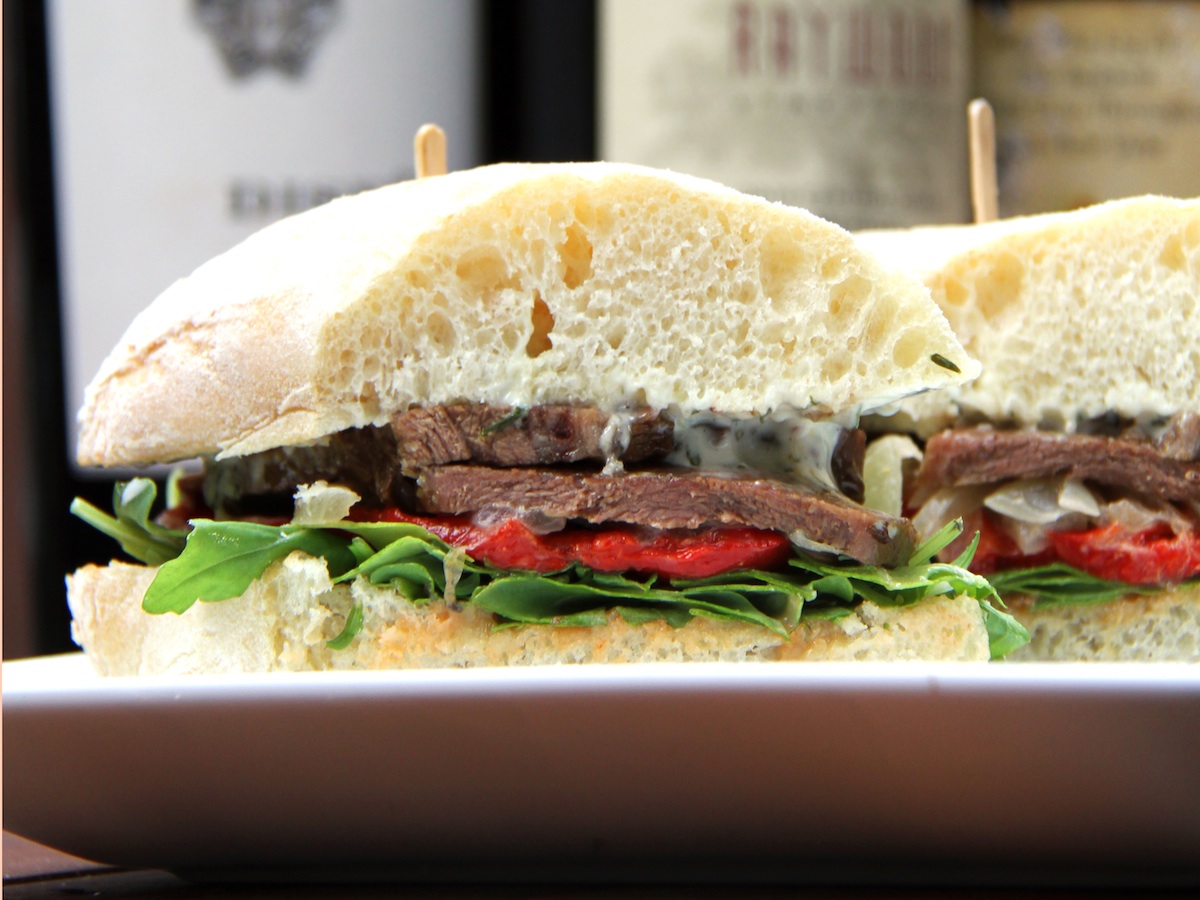The Local newsletter is your free, daily guide to life in Colorado. For locals, by locals.
In March of 2013 I had dinner at Uncle. I ordered a special—a riff on corned beef hash that featured corned beef tongue—that Tommy Lee and his crew put together for St. Patrick’s Day. Uncle plated a crescent moon of diced tongue next to coins of confit fingerling potato, parsley, dill, and plump pickled mustard seeds. It was a gorgeous dish. As I studied the tiny taste buds protruding from each carefully cut piece of meat, I remember thinking that it was the first time I had eaten beef tongue where it was still so physically decipherable. Prior to this, I’d only had it braised to tender threads or encased in a taco cart tortilla.
That starter at Uncle was the first of many such beef tongue dishes to come. In the year and a half since, I’ve watched the item once relegated to ethnic eateries make its way onto tony menus all over Denver. When Olive & Finch opened in late-November we immediately fell for the Greggers (pictured). To make the sandwich, chef-owner Mary Nguyen braises tongue in a blend of spices for six hours until it’s fall-apart tender. The meat is then thinly shaved and sautéed in its own braising liquid. Nguyen serves it on a warm, crusty baguette with roasted garlic purée, tarragon aïoli, caramelized onions, roasted peppers, and arugula. “[Tongue] an underutilized and underrated cut of meat,” the Vietnamese-American chef says. “Since Americans don’t typically consume it in their diets, I thought that serving it in an American lunch staple—the sandwich—would be a great way of introducing the cut of meat to the masses.”

Nguyen is not alone. I’ve seen brined then gently smoked beef tongue pastrami on a Colt & Gray charcuterie board. “The fat content in beef tongue is relatively high, but it is really well distributed throughout the meat, which adds to the flavor and moistness of the pastrami,” owner Nelson Perkins says. Sushi Sasa’s Wayne Conwell—who recommends the lengua platter at Taqueria Mi Pueblo and the Korean, tabletop-cooked take on beef tongue at Silla—has offered the protein as a special. Conwell serves it torch-seared and thinly sliced for dunking in a ponzu sauce with grated fresh ginger, radish, and red Japanese peppers.
Scott Parker, chef of Session Kitchen, is currently running a tournedo of beef tongue pepper steak. The meat, which he brines for a week and then slow cooks for 12 hours, is served on the restaurant’s charcuterie plate with grilled onions, fried chiles, a green peppercorn vinaigrette, and Dijon cream cheese. Lower48 Kitchen sous chef Greg Schesser is currently curing beef tongue in a solution that includes pickling spices, ginger powder, and champagne vinegar. Later this month, the French Laundry alum will braise the tongue in brine for six hours and serve it thinly sliced alongside house-made pickles and mid-summer vegetables.
With all this interest in a once-overlooked cut, it’s no wonder demand—and cost—for beef tongue has gone up. “I’ve seen the price go up 500 percent just in the last five years,” restaurateur Troy Guard says. The chef-owner of Los Chingones sticks to basics and serves the cut in one of its most well-known ways—in a taco, topped with charred tomatillo salsa. For beef tongue newbies I can think of no better way to give the cut a try than Guard’s well-executed take on an original classic.
Follow Stacey Brugeman on Facebook, Instagram, and Twitter @denveromnivore.
—Image courtesy of Jessica Nguyen for Olive & Finch








